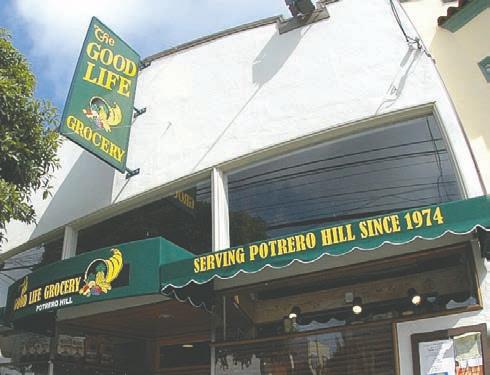

Mission Rock Development Continues to Roll
BY MICHAEL IACUESSAThe San Francisco Planning Commission’s October approval may not have been the fall victory San Francisco Giants fans would’ve liked, but it’s a solid leadoff single for the team’s plans to redevelop 28 acres south of AT&T Park.
The project needs approval from the Port Commission, which will consider the matter at a January 9 meeting; from the San Francisco Board of Supervisors, likely later this month; and from the Bay Conservation and Development and the State Lands commissions. However, judging from the Planning Commission’s seven-to-zero vote, the first taken on the proposal’s environmental impact report (EIR), there may be little opposition. Several commissioners referred to it as the “gold standard” for development proposals. Other difficult hurdles – raised height limits and affordable housing percentages – were endorsed by voters through Proposition D in 2015.
The parcel, known as Seawall Lot 337, is directly south of McCovey Cove, between Third Street and the Bay, and includes Pier 48 and part of Pier 50. What’s now a parking lot will be transformed into a street grid with 11 blocks: four residential, four commercial, three flexible. There’ll be eight acres of open space, including a redesign of China Basin Park along the cove and a village square in the parcel’s center.
“It’s definitely a very big step for the project,” said Fran Weld, vice president of strategy and development for the Giants. “All the different bodies voting on it will represent the culmination of 10 years of work. We are really realizing the community’s vision of the neighborhood.”
According to the Port of San Francisco’s project manager, Phil
Williamson, there’ve been no recent plan changes. “It is very similar to what the Port has been seeing the past two years,” he said. There’ll be 1,000 to 1,600 residential units, 40 percent deemed affordable to households earning 45 percent to 150 percent of the area’s median income; up to 1.4 million square feet of commercial space; and 3,100 parking spaces, an increase of 230 from the current lot that serves Giants games.
Assuming the project passes muster early next year, design work and permitting would take up the remainder of 2018; construction wouldn’t begin until 2019. Infrastructure, particularly water and electricity, needs to be conveyed to the site.
Construction would be undertaken in four phases over the next seven to ten years, subject to market conditions.
The first phase would involve a remake of China Basin Park and erecting two residential and two commercial blocks.
In the second phase, two more blocks would be developed, plus a 10-level parking structure, which’ll allow for continuous Giants parking. Accord-
BY JACOB BOURNESt. Ignatius College Preparatory, a Catholic Jesuit high school located on 37th Avenue, has been educating Bay Area children for 160 years. Tuition for the 2017-2018 school year is $22,780 per student, unaffordable for most families.
WANTED: One Day a Week Advertising Salesperson
Get to know your community, and help sustain your neighborhood newspaper. Modest base pay, plus commission. Send note and résumé to: editor@potreroview.net
To better prepare scholars for the challenging St. Ignatius curriculum, a tuition-free junior high school was created this academic year to serve pupils from low-income families. Named the “Father Sauer Academy,” the program started with sixth grade, with seventh and eighth grades to be added in successive years. Prior to Academy creation, SI accepted students from economically disenfranchised backgrounds, and held a summer program to prepare them for high school. While graduation rates of these learners have been historically strong, many relied on remedial learning services to enable them to catch up academically with other students.


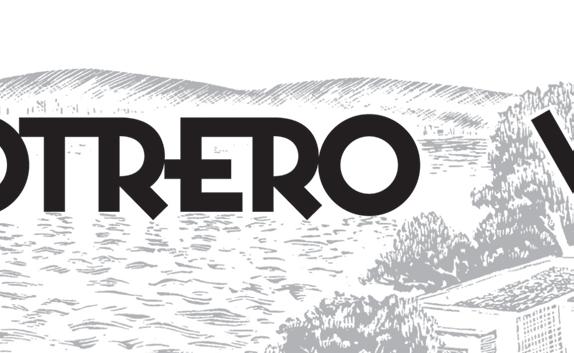


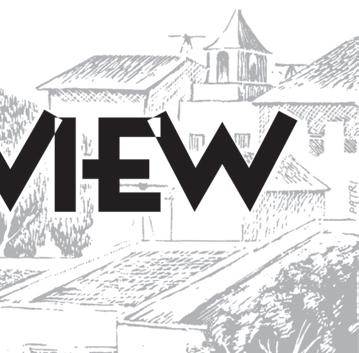
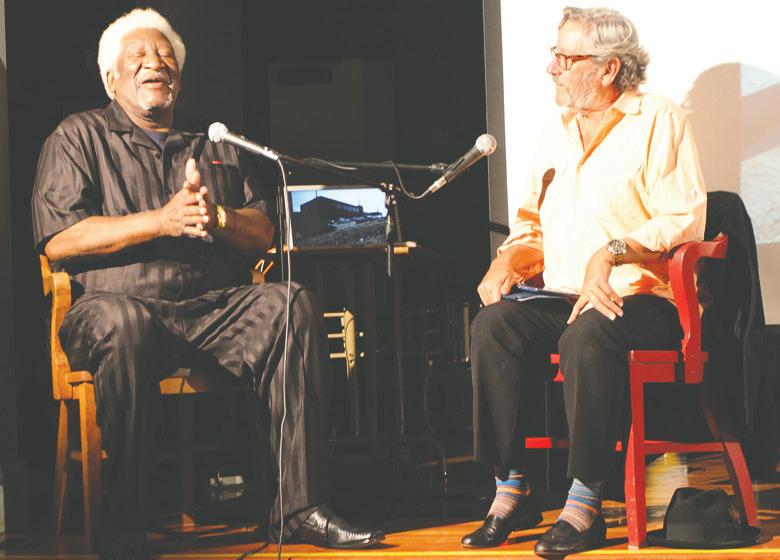
ing to Williamson, the aim is to have a balance of residents and workers, with development fees collected on commercial space used to help finance affordable housing. The entire parcel will be raised 66 inches in phases to account for potential sea level rises.
According to Weld, Pier 48 would be renovated in phase four. “It involves reopening up the aprons, which are the public walkways around the pier. They have always been closed to the public,”
she said, explaining that they’re currently red-tagged as unsafe. “The pier structure itself will be rehabilitated as well.” She added that it’s too early to determine what form the revitalized pier would take, though it could be used by commercial tenants or as a special events space.
According to the EIR, construction will cause traffic delays on Third
MISSION ROCK continues on page 6
St. Ignatius Creates Junior High School Program
“We’ve had outreach efforts to disadvantaged communities in the City for a number of years, and ran a summer program for those kids,” said Joe Vollert, St. Ignatius’ vice president of advancement. “Instead of just having them for the summer, we’re enrolling them for the whole school year at the Father Sauer Academy. The educational divide is often tied to the economic divide. We want to provide solid college preparation to students who lack the opportunity.”
Vollert explained that over the last nearly 30 years the Catholic Diocese has closed parochial schools in the City, including St. Paul of the Shipwreck in Bayview, which shuttered its elementary school in 2003. According to Diocese records, 10 parish schools have been shut down in San Francisco since 1990. Several school mergers have also taken place. The Father Sauer Academy is an attempt to help fill some of the educational gaps in the City’s hardpressed communities.
The genesis of the Father Sauer Academy began when St. Ignatius’s new president, Father Edward Reese, arrived at the school in 2016. Reese had previously served as president of
Brophy College Preparatory in Phoenix. During his 20 years at Brophy he started the Loyola Academy, a program similar to the Father Sauer Academy. According to Paul Totah, St. Ignatius’ communications director, Reese announced creation of the Academy shortly after he assumed his new post as president. The Sangiacomo family, longtime donors to St. Ignatius, gave $3 million to help launch the effort.
Karen Hammen was hired as the Academy’s director, along with two full-time teachers and a volunteer teaching assistant. Hammen, originally from Montana, has taught at several Catholic schools in California and other states. She holds two master’s degrees in education from the University of Notre Dame.
“Our scholars live in San Francisco in neighborhoods such as Hunters Point, Bayview, Ingleside and one student in Western Addition,” said Hammen. “The curriculum is rigorous. This is an opportunity for our scholars that will enable them to be prepared for St. Ignatius and put them on the path to college. This is really life changing
Chances are the years ahead will be hotter, with recurrent temperature spikes in the San Francisco Bay Area. That in turn will induce increasing numbers of households to purchase fans, and, ultimately, air conditioning. Presently, only about one in ten Bay Area homes have central air. Perhaps one-third or more of new residences being built are outfitted with such equipment, with an unknown, but likely growing, number of existing households installing window, wall, or central units.
Increased air conditioning load translates into higher demand for electricity. It’s a deal with the devil. Energy use makes us more comfortable – cooler – but, depending on what resources are used to generate electricity, can contribute to creating the conditions that cause our discomfort and the planet’s pain; greenhouse gas

emissions. California’s grid partially ameliorates the pernicious side of this deal because it’s gradually being dominated by solar and other renewable generation. But when the sun slides down the horizon natural gas power plants are fired up to replace photovoltaics, pumping out a steady stream of polluting emissions.
To avoid getting gas, new, more benign resources need to be developed: price signals that create incentives for technology-enabled management of twilight “needle peaks” in electricity demand; ever more efficient lighting and appliances; and power storage, hopefully at least in part in the form of growing electric vehicle fleets, which, while increasing demand for electricity, can also serve as standby voltage when they’re plugged in. While California can’t directly change the weather, the Golden State can show the world how, collectively, we may be able to economically and equitably do so.
San Francisco has access to another resource that could both forestall natural gas use and improve the City’s energy resiliency in the aftermath of neighborhood-specific or regional disruptions. There’s upwards of 1,000 megawatts of “standby” generators – enough to cover San Francisco’s total electricity demand on a mild day – located at hospitals, college campuses, research institutions, internet server farms, and other large facilities. These generators, mostly natural gas-powered, are almost always idle, waiting for an outage to occur, typically caused by localized problems with the utility distribution system, rather than largescale transmission or generation failures.
These resources could be replaced with more benign assets, such as batteries, pumped or ice storage, or even vehicle charging. Innovative network technology could be deployed to create access to them when they’re not needed by their owners, but are by the grid, with the resulting payment flow financing the shift to clean power. Such a strategy would serve to tighten up San Francisco’s energy ship in anticipation of the rougher waves ahead, as well as provide a resource to replace natural gas at sunset.
It’s going to get hotter. To keep our cool, we’ll need to get ever more thoughtfully clever.


Corovan Speakeasy
Last fall, Superior Court Judge Cynthia Ming-mei Lee issued an order that upheld San Francisco Planning Commission and Board of Supervisors approvals for a mixed-use project at 901 16th Street and 1200 17th Street, known as the “Corovan” site. Save The Hill and Grow Potrero Responsibly had argued that portions of the development’s environmental impact report were inadequate and/or inaccurate, and that it exceeded residential growth contemplated by the Eastern Neighborhood Plan. Judge Ming-mei Lee “denied in its entirety” the complaint. The project sponsor, Walden Development, hopes to start construction in late 2019.
 Editor,
Editor,
After a nine-month hiatus, Speakeasy Ales & Lagers reopened its remodeled Hunters Point taproom and resurrected its bottle production for retail distribution throughout California and select markets across the country, including New York City. Preserving the two-decade history and tradition of one of San Francisco’s stalwart production breweries, Speakeasy Ales & Lagers is back in business under new ownership by Ces Butner, chief executive officer, Hunters Point Brewery LLC. Speakeasy will hold a Grand Opening event at the brewery on January 27, 2018.
Letters to the Editor
I noticed that in the December issue headlines above articles written about three men running for District 10 Supervisor mentioned each candidate by name. Yet Uzuri Pease-Green, the only woman in the race, is simply referred to as “Long-Time Potrero Annex-Terrace Activist,” and not named in the headline above the story about her. I find this different treatment appallingly disrespectful. Name recognition matters in these races. Ms. Pease-Green deserves an apology and a correction.
Joni Eisen Pennsylvania Street
Editor,
The October “Short Cuts” included a prediction that Sapporo would develop condominiums on the Anchor Brewing site by 2030, as well as a “rumor” that employees were asked to sign an agreement stating that they can be fired at any time for any reason.
The agreement the View alluded to is an “at-will” employment contract, which employees throughout California sign.
There are many negative views online and in the press regarding Sapporo’s purchase of Anchor. I spent 33
years in Japan, and 23 on Potrero Hill. Sapporo brews a fine draft beer, which sells well. It resurrected a dying 100 percent malt Yebisu Beer company to make it the delicious, profitable brand it is today. No easy task for a costly beer to brew. Similarly, Sapporo is likely to maintain the quality of steam beer while increasing distribution in Asia. This should be wonderful for Anchor Steam and Potrero Hill.
Nels McWilliams Missouri Street
Editor,
I just read “Jackson Playground to Expand” (July) and am excited as always to have some focus on our neighborhood gem. I wanted to point out that Jackson Playground is also used daily by more than 45 children who attend the Jackson Afterschool Program housed within the Jackson Clubhouse, walking or bussing from our local public schools – Daniel Webster, Starr King – and spending about 15 hours a week on site. The afterschool program has been running for well more than 30 years at 13 City locations, and is run by San Francisco Park and Recreation Department.
Elain Sprague Stuebe
Vis Valley Activist Neo Veavea Vies for District 10 Supervisor
BY JESSICA ZIMMERAt the end of last year, community activist Neo Veavea launched his campaign for the District 10 Board of Supervisors seat. Veavea, who has lived in the District for 50 of his 60 years, resides in Visitacion Valley. He works as the project coordinator for the Samoan Wellness Initiative (SWI), a Samoan Community Development Center (SCDC) program. SWI educates Vis Valley residents about mental and physical health care, prevention, and access.
For the past eight years, Veavea has been on the steering committee for the Visitacion Valley Festival, also called the Leland Avenue Street Fair, an annual fall jubilee that celebrates the neighborhood’s diversity and spirit. Veavea is a past member of the San Francisco Human Rights LGBT Advisory Committee, and has served as Visitacion Valley Elementary School Parent-Teacher Association president.
According to Veavea, Southside neighborhoods face challenges associated with affordable housing, homelessness, education, and transportation. “District 10 is home to [some] of the City’s largest public housing projects. Current residents are worrying about displacement,” he said.
Public housing complexes in the District include Sunnydale in Visitacion Valley, Oakdale, Alice Griffith,
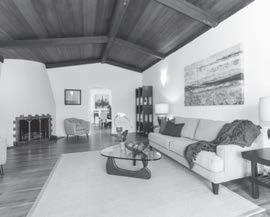

Hunters View, those located on West Point Road in Bayview-Hunters Point, and Potrero Annex-Terrace in Potrero Hill.
District 10 residents “don’t need to resist the” development, said Veavea. “What we need to do is make sure the developers know we’re at the table. What does affordable housing look like to someone who’s getting paid $15 to $20 an hour?”
As Supervisor, Veavea would work to address crime in the Southside neighborhoods. He’d encourage the San Francisco Police Department to field more foot patrols in areas of Dogpatch and Potrero Hill where vehicles are being broken into, and greater police presence in Visitacion Valley.
Veavea also wants improvements in public transportation, particularly to serve Visitacion Valley residents. “The T-line to the Castro takes you at least an hour and a half to get anywhere. Taking away the 15-line, it takes forever to get Downtown,” he said.
Russel Morine, who has lived in Visitacion Valley for 20 years, and serves on the Visitacion Valley Festival steering committee, supports Veavea’s run. “He’s a neighbor. We’ve been friends for about 15 years. He’s always been there, representing a lot of the interests in the Samoan community and the LGBT community. [At the street fair], we’ve had thousands of people out over the years. Our goal is to activate Visitacion Valley’s commercial


corridor and make connections within our community. The event would not be the same without his organizational skills,” said Morine.
Veavea’s advocacy is significant for “folks who have grown up here and are struggling to stay here,” Morine said. “The housing that is available now and the units coming with new developments, safety, quality of life, traffic, and parking, all of these need to be addressed. Visitacion Valley will look different in 10 years. There needs to be a bridge between the old and the new. Neo knows how to do that dialogue. I see his role as being a conduit of discussion.”
According to Curt Yagi, executive director at Real Options for City Kids, a nonprofit organization that offers sports programs and academic assistance to youth ages six to 17 in Visitacion Valley, Veavea is wellmeaning and passionate about the neighborhood. “His intention is to do the right thing. He has our community’s best interest in mind,” said Yagi, who has known Veavea for about 10 years.
Yagi, who lives in Potrero Hill, said Visitacion Valley is a “sort of the forgotten neighborhood. We’re still under-resourced here. I’m looking at how that person [who represents District 10] can be the voice of people who haven’t been heard.”
VEAVEA continues on page 6
Buy Nothing Inspires Local Gift Economy
BY JACOB BOURNEAn initiative to foster communities of giving and sharing that started in Bainbridge, Washington, in 2013 now has a local group serving Potrero Hill and Dogpatch. The Buy Nothing project is a network of hundreds of Facebook groups that spans communities in the United States, United Kingdom, Australia and Canada, that encourages people to share their time, talents and goods with others on a hyper-local scale.
The project was originally started by Liesl Clark, a National Geographic filmmaker who documented a cavedwelling Himalayan culture from ancient to modern times, and attributed their good health and ability to survive harsh conditions to “an egalitarian cash-free gift economy connecting families in a web of interdependence.” An essential aspect of the gift economy is that all members act as both givers and receivers. Clark partnered with social media expert, Rebecca Rockefeller, to start the Buy Nothing Facebook group project. Today, hundreds of volunteer administrators manage the Facebook accounts and work to nurture Buy Nothing communities.
“A gift economy requires a shift in
BUY NOTHING continues on page 16
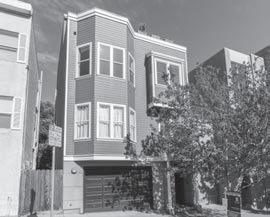
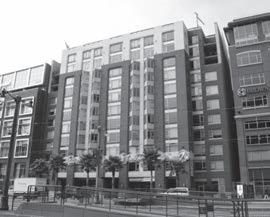




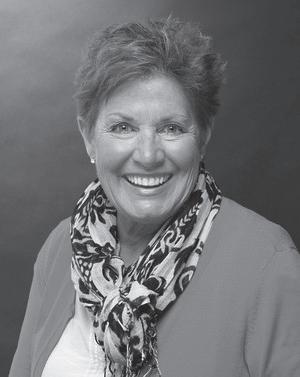
City Continues to Grapple with Homelessness
BY CHRIS BLOCK AND STEVEN J. MOSSLast fall, Randy Quesada, Communications and Community Relations Manager for the Department of Homelessness and Supportive Housing (DHSH), provided the View with a tour of the Central Waterfront Navigation Center, located at the end of 25th Street. The facility opened last spring with a 64-bed capacity. As of December 1, 54 were occupied.
The Center appears to be well maintained; the area directly around it is largely free of encampments. According to Quezada, the Central Waterfront Navigation Center has served 119 clients since it opened on May 31, 2017. Patrons are largely referred from the Encampment Resolution and Homeless Outreach teams. To date, 18 guests –roughly 15 percent of those assisted – have been relocated to permanent housing; one received a temporary placement; seven were evicted. The remaining 40 people haven’t returned to the Navigation Center since they’ve been discharged.
The Department was unable to provide information on length of stays due to limitations of its data tracking system. Material reported in this article was obtained through a request to the City. There’s no consistent DHSH reporting on Navigation Center outcomes. This despite the fact that in the fall of 2016 the Department’s director, Jeff Kositsky, stated that such information would be regularly published by mid-2017.
The City offers 368 beds in its Navigation Centers, which could increase to 433 cots after the 16th and Mission streets facility closes this fall and a planned South-of-Market center opens in the spring. In addition, 1,200
shelter beds are available. Roughly 4,000 people live on the streets.
At the end of last summer, Hummingbird Place, located at San Francisco General Hospital, opened, offering 15 beds for the mentally ill. It’s lodged 43 people since August 31, 2017, in addition to almost 500 day-use clients. The average length of stay at the facility has been approximately two weeks. It’s unclear whether or not DHSH is tracking individual’s outcomes after they’re discharged.
According to Sam Dodge, a special assistant at the Department of Public Health who previously worked at DHSH, the City was pleased with encampment reductions in the Mission – from 180 to 50 tents – that resulted from the June 2017 opening of a Navigation Center at 1515 South Van Ness Avenue. Dodge explained that the facility provides resources associated with job readiness, rapid rehousing, drug treatment, shelters, homeward bound and other services.
Dogpatch Neighborhood Association president, Bruce Kin Huie, said his group has been working closely with the Department of Homelessness and Supportive Housing to alleviate encampments in the community. DHSH staffer Emily Cohen told DNA, six months after the Central Waterfront Center opened, that it’d completed an assessment of the area within Islais Creek, Mariposa, Pennsylvania and the Bay. Twenty-five tents were identified; individuals living there will be offered a placement in a Navigation Center or other safe place. People who don’t accept a shelter offer will be removed by the San Francisco Police Department, presumably to other locations nearby, where they’ll likely re-setup camps.
Longtime Potrero Hill Resident Ron Miguel Moves Across Town
BY REBEKAH MOANDespite decades engaged in public forums, former San Francisco Planning Commission president Ron Miguel is a private person. Don’t expect a tell-all memoir from him anytime soon; he’d rather talk about land use policies, which first captivated him in the 1950s. At that time, Miguel, a third-generation San Franciscan, campaigned for tax increment funding to pay for the Bay Area Rapid Transit system, which wasn’t constructed until the 1960s.
Miguel served on the Planning Commission from 2007 to 2012. He was also president of the Planning Association for the Richmond District for 16 years, and now, at 86, chairs a committee on how to bring high-speed rail into the City without disrupting automobile traffic.
“I won’t be around to see that, it’s 40 years in the future, but we’re planning for it now,” he said. “You have to be a bit of a futurist and convince people. Some people say ‘I moved here 20 years ago and everything is fine. Why ruin it?’ You can’t argue with those people. You deal with them and lead them forward.”
Until 1991 Miguel ran a flower shop he inherited from his father-in-law on 25th Avenue and Geary Boulevard, applying the skills he learned there to land use challenges. “I found in the floral business people would come in because they had a wedding or a party in a hotel room that was built for a convention meeting. My job was to turn that room into a party. It was difficult to get people to imagine what I was doing. They don’t automatically understand those things, which is no different with land use issues.”
According to Miguel, engaging in land use debates has allowed him to
apply his creativity in a concrete and lasting way. “Nothing stays the same,” he said. “Everything will change and be different. You can have a hand or a voice in bringing opinions together, so the changes that are made make sense for the future, or not.”
Last fall, Miguel, facing health challenges, and his wife, Ruth, moved into the Rhoda Goldman Plaza assisted living center on Post Street after 42 years of residing on De Haro Street. The couple have three children, seven grandchildren and three great-grandchildren.
Miguel makes concessions for his health by taking Lyft to meetings so he doesn’t have to drive or park. “Even though my physical abilities are diminishing, so far, I think, my mental abilities are still there,” he said. “I’d be bored to death if I wasn’t involved in land use. I’ve never enjoyed card games or playing bingo. I enjoy museums and movies and things like that, but my busy work has been organizational things and land use.”
Miguel remains active on Potrero Hill, volunteering with the Green Benefits District, Potrero Boosters, and Dogpatch Neighborhood Association. “I love the energy of the City, what the City provides,” he said. “Neither my wife nor I understand, appreciate, or want to deal with suburbia. It’s foreign to us.”
The Hill has “the best weather in town. No question about that. And in the past five to 10 years, the City kept coming to us: bars, restaurants, entertainment. If we moved out, where would we go that’s any better than where we were? The neighborhood was great, the neighbors and people around were wonderful. We made a number of good friends.”



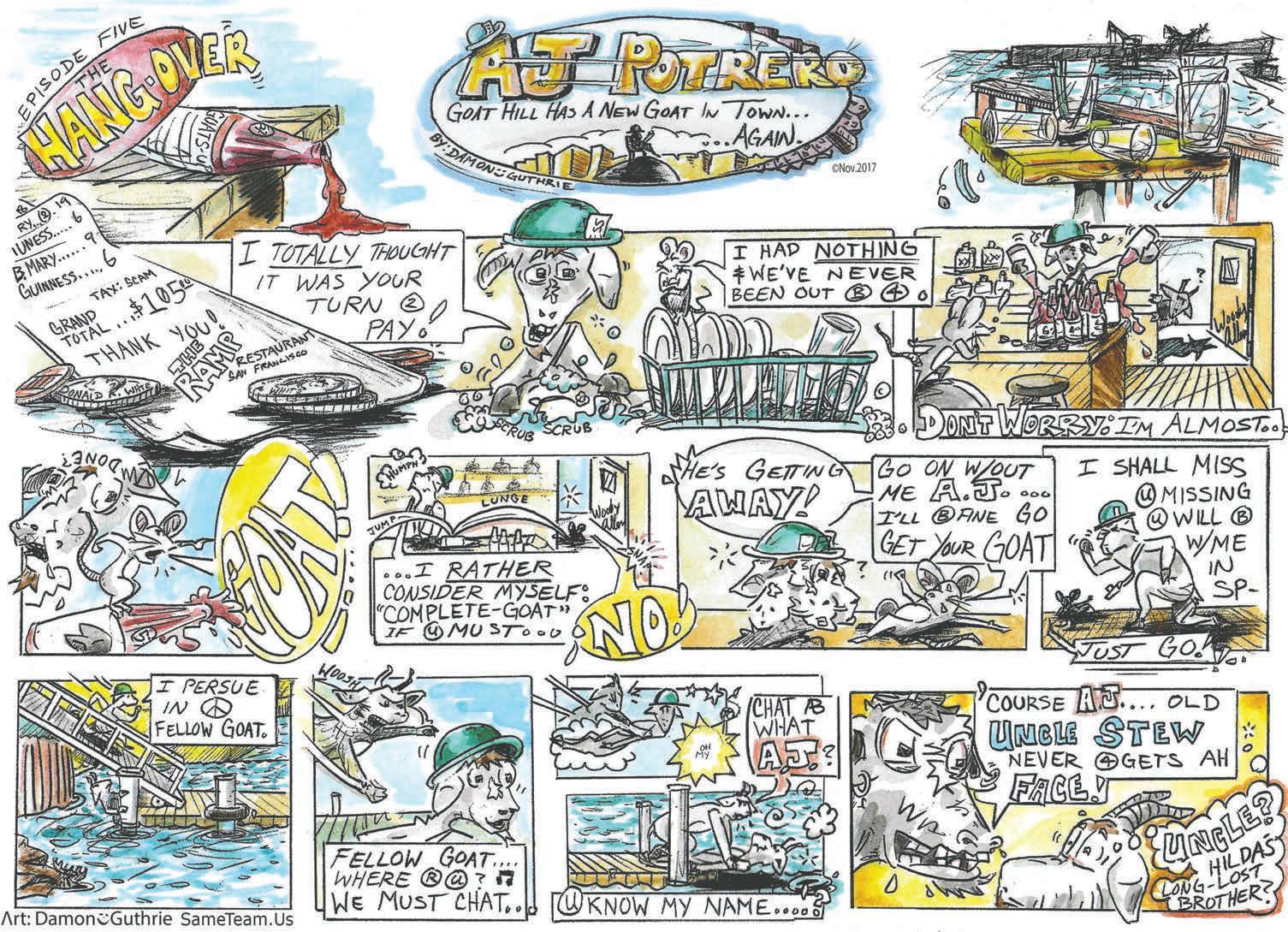

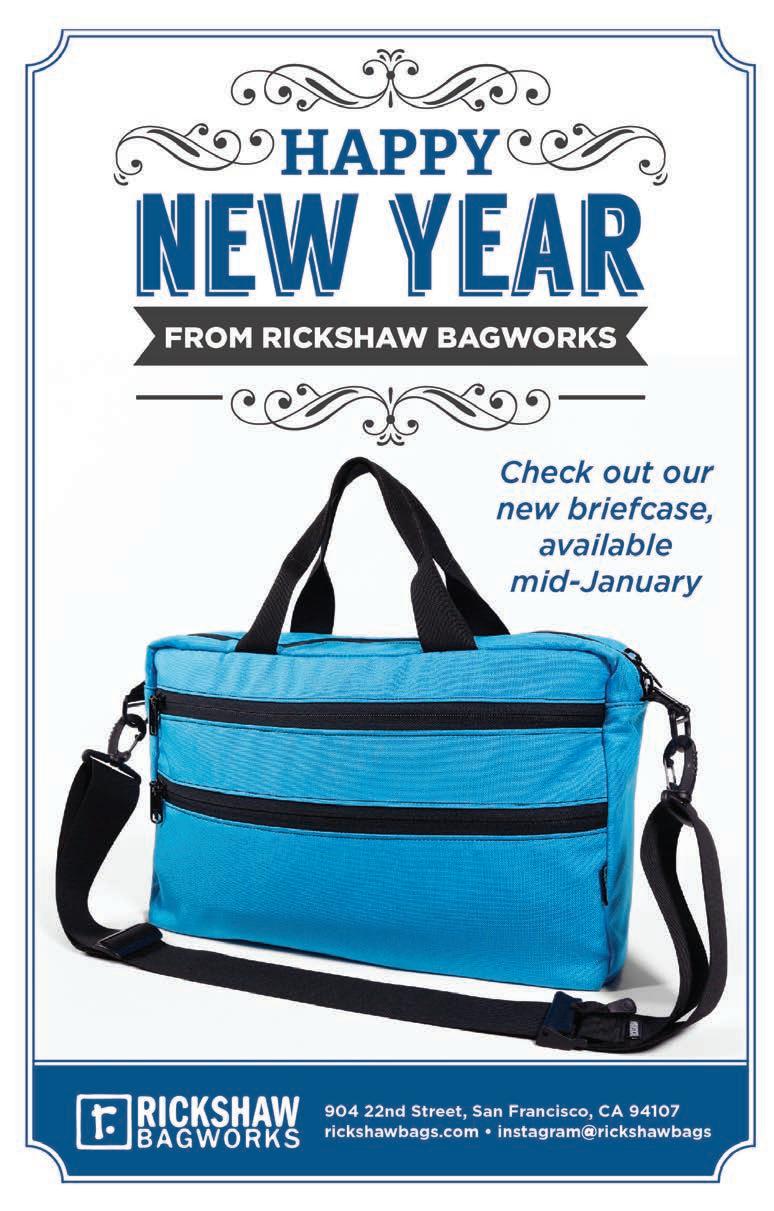
Street, between Channel and Mission Rock streets, with additional circulation congestion from overlapping building with other projects in the vicinity. Ridership is expected to increase on the 10 and 30 bus lines, which are near capacity now. If those busses pass 85 percent capacity, the Giants are required to contribute additional funds to the San Francisco Municipal Transportation Agency.
Proposition D increased heights from the previous one-story limit to up to 240 feet. According to the Planning Department’s response to public comments, “increased development would represent a small portion of the overall urban scenic vista, as viewed from the Potrero Hill neighborhood, Potrero Hill Recreation Center, Twin Peaks, and Interstate 80.” It noted a more pronounced change would come looking from areas around AT&T Park; views of Potrero Hill and Twin Peaks would be blocked by the proposed buildings.
Other public comments reflected concern about the new neighborhood’s general aesthetics. The Planning Department asserted that the plan focuses on walkable blocks that enhance connections to the waterfront and surrounding streets, and calls for maximizing frontage, allowing spill out onto open spaces
Weld told the View, “One of the key elements of the design approach was to integrate open space to the design of the buildings themselves.” Restaurants and doorways will front onto the square, China Basin Park and two smaller pocket parks directly without people needing to cross vehicular traffic. She said there’ll be a wide variety of architects offering a multitude of designs. “The buildings will have varied heights and different sizes, and will feel a lot more diverse than some other newer parts of the City,” she promised.
Public comments also focused on allowing public land to be used for private ventures – the property will be leased and remain under Port ownership – and whether access to the shoreline will be unrestricted. The Planning Department reported that entry will be unrestricted through early project phases, but will be limited when work on a promenade along the waterfront and Pier 48 begins.
Variances to the plan are included in the EIR, such as the creation of an entertainment venue that could accommodate as many as 4,000 people in up to 50 events per year; and a hotel instead
of a residential building. Currently, in addition to serving as a parking lot, the site has customarily been used for approximately the same number of special events a year, drawing an average total of 200,000 people.
At one point, Anchor Brewing was considering being an early tenant, but Williamson said those discussions have been moved to a later phase. He said there have been no other conversations about what businesses might lease space in the new development.
ST. IGNATIUS from front page for our 25 scholars.”
This year’s sixth grade class consists of 25 pupils; 13 boys, 12 girls. Forty percent of Academy scholars identify as African-American, 40 percent as Latino and 20 percent as either Asian or Multicultural. At St. Ignatius, 50 percent of students are Caucasian, 20 percent Multicultural, three percent African-American, 12 percent Asian, seven percent Filipino, six percent Latino and two percent identify as “other.” There’s no requirement to live in San Francisco, though currently all students reside in the City. This year the school is providing transportation for students, which Hammen commented has been challenging due to severe traffic congestion. Parents of students must demonstrate financial need, as evidenced, in part, by being income-eligible for the San Francisco Unified School District’s free lunch program.
The Academy’s recruitment efforts have focused on local churches and organizations such as Catholic Charities and the Boys & Girls Club. The admissions process weighs traditional metrics, such as grades and test scores, but also puts emphasis on whether the applicant has demonstrated that they want to be challenged to learn and grow as a scholar. Interviews are held with both the child and parents. The Academy received 70 applications for the 2017-2018 school year. The application process for the 2018-2019 school year begins in January.
According to Connor Geraghty, an Academy English language arts teacher who graduated from St. Ignatius in 2009, experiential learning opportunities are incorporated into the curriculum. He explained that lower-income youth may not have the same opportunities to engage in such activities as going to a San Francisco Giants game, flying in an airplane, seeing a play or visiting a museum, which
can hamper their learning potential. The Academy provides a monthly field trip to places like the Exploratorium to create occasions for cultural enrichment. There are structured encounters between St. Ignatius high schoolers and Academy scholars, to allow both groups of students to gain new perspectives. For example, during study hall hours, high school scholars serve as tutors to their younger peers.
Once admitted to the Father Sauer Academy, scholars are ensured a spot at St. Ignatius through 12th grade, tuition-free, provided they graduate from each grade level. Reapplication from eighth grade into high school isn’t required. According to Vollert, there are usually 1,200 applicants for 370 spots at St. Ignatius; Academy students would likely be admitted anyway — they’re just enrolled three years earlier to better prepare them for SI’s curriculum.
Geraghty commented that most alumni he’s spoken with have been supportive of the Academy, conveying that it should have started earlier.
“As an alumni, the creation of the Father Sauer Academy is the decision that I’m most proud of my alma mater this millennium,” offered Tripp Jones. “The City of San Francisco has always been good to St. Ignatius, and the Academy is a way to show the community that the school is here for all of the San Francisco Bay Area. Through the great work of a lot of people, St. Ignatius has transformed itself over the last several decades from the high school where the Catholic families of San Francisco educated their boys into one of the region’s premiere college preparatory schools serving the entire Bay Area community. Overall, this has been a boon to the St. Ignatius community, because amazing parents from around the Bay have increasingly realized that SI sets kids up on a strong path in life, into college and beyond. Unfortunately, like so many things in our society, low-income families did not share equally in the success of the St. Ignatius community. Since before my time, SI has made real efforts to include children from low-income families, but, in certain circumstances, the on-ramp to college starts before high school.”
Jones explained that some in the St. Ignatius community are unhappy with the amount of money and resources the Academy requires, and see incoming Academy students as “taking spots away” from kids that would otherwise be accepted to SI.
“For a school that is steeped in

traditions, the Father Sauer Academy is an audacious project that will disproportionately benefit low-income families and people of color and I think that it is wonderful,” Jones expressed. “For St. Ignatius to thrive for another 150 plus years, it needs to serve all people of the Bay Area. In our hypercompetitive world, the members of the St. Ignatius community should remember that the Ignatian ideal is to become ‘men and women for others’ and not ‘men and women for getting their kids into Harvard.’”
VEAVEA from page 3
Patsy Tito, SCDC’s executive director, thinks highly of Veavea and supports his campaign. Tito, who has known Veavea for roughly a decade, considers him a friend as well as a coworker. “Putting his name on the ballot is something big for our Pacific Islander community. Our concentration in the San Francisco area has historically been in Potrero Hill, Hunters Point, and Visitacion Valley. Visitacion Valley especially has been a community that hasn’t gotten so many resources. One of the biggest things is be an advocate,” said Tito.
According to Tito, Veavea is engaged in neighborhood events and affairs. He often attends meetings with City officials and “comes back to tell us what goes on. Through him, the needs of this community are heard and taken to heart. He really cares about the issues [in] this community.”
Tito believes that one of the most important issues facing the District is affordable housing. The SunnydaleVelasco Housing Project is in the process of being reconstructed. “It’s so disheartening to be promised all of these things now. For years, we’ve been waiting, seeing nothing get done. We’re hoping the next District 10 Supervisor will listen,” said Tito.
Tito wants more resources invested in transportation and education. “We really have only one bus that comes through, the nine. There needs to be more in order for our folks to go outside for their appointments. Also, SFUSD should put a lot more things in place in this District…They can give us teachers that are willing to work with kids that have been traumatized by violence in the District,” said Tito.
Julio Muao, a former Visitacion Valley resident who grew up with Veavea, supports Veavea’s decision to
VEAVEA continues on page 18


If

2017:
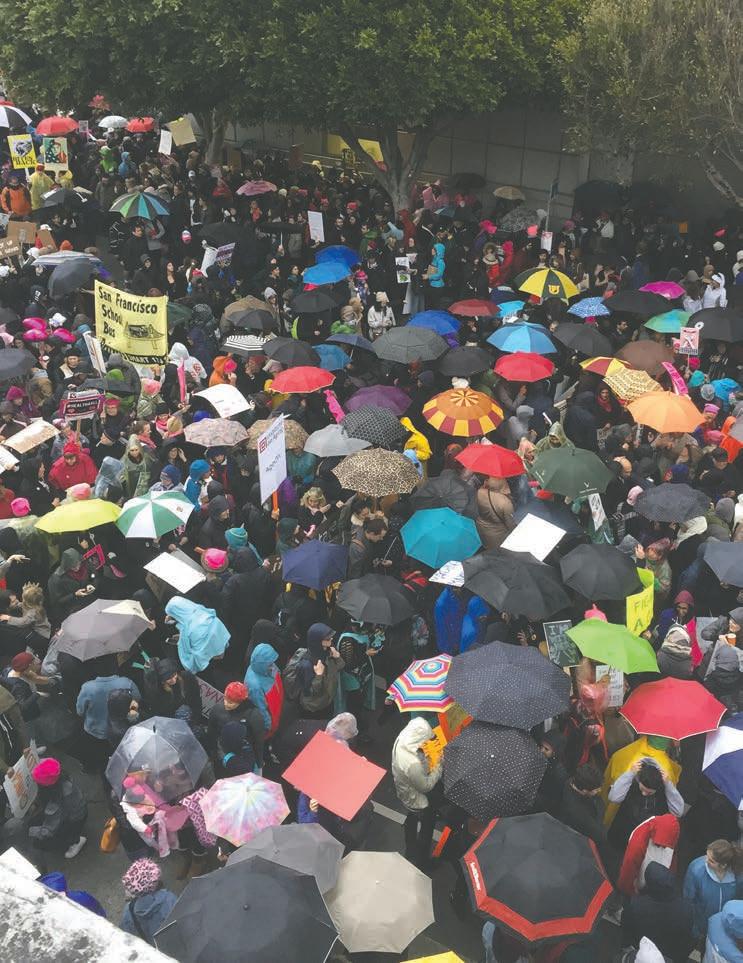
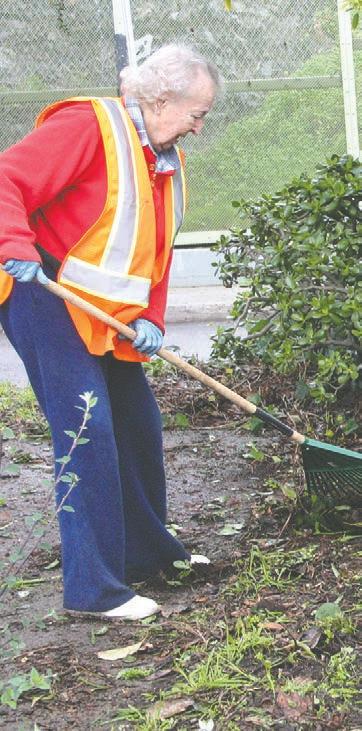
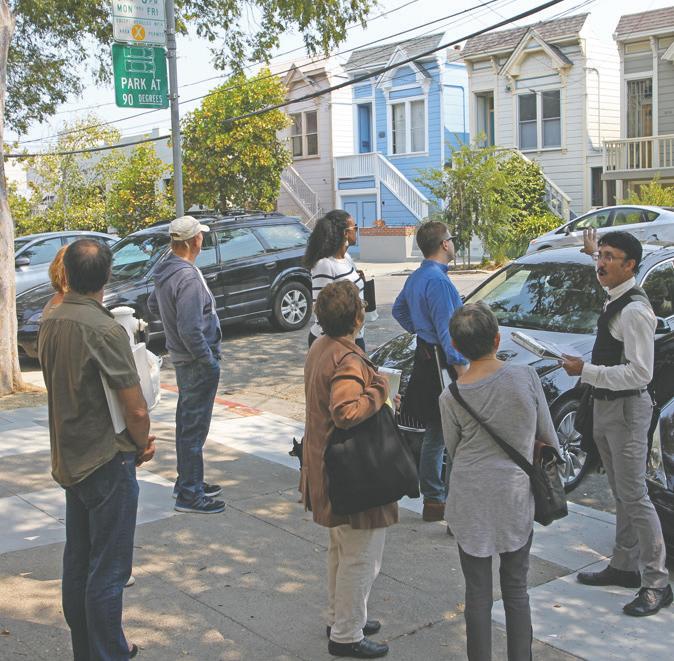
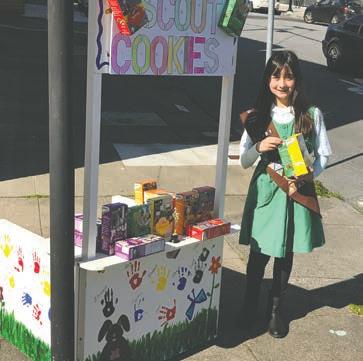

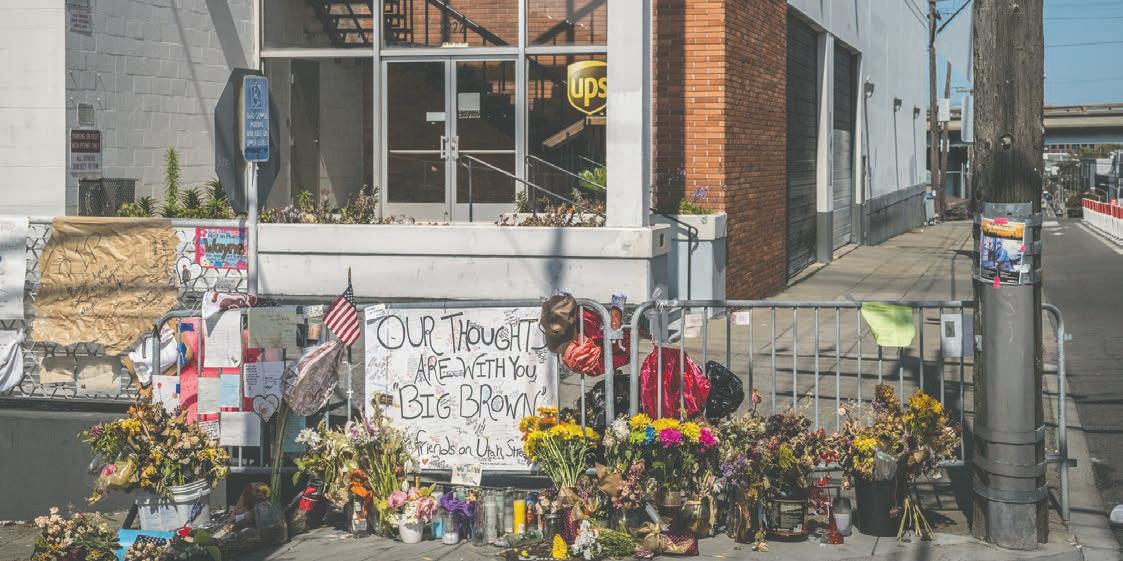



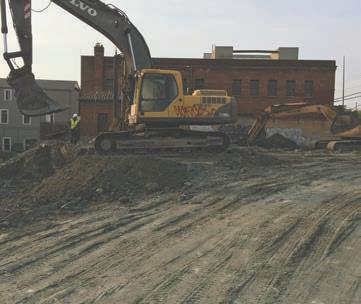





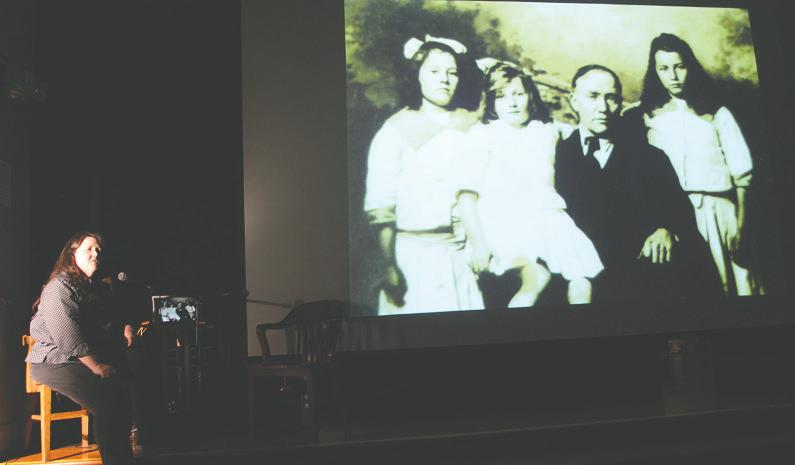

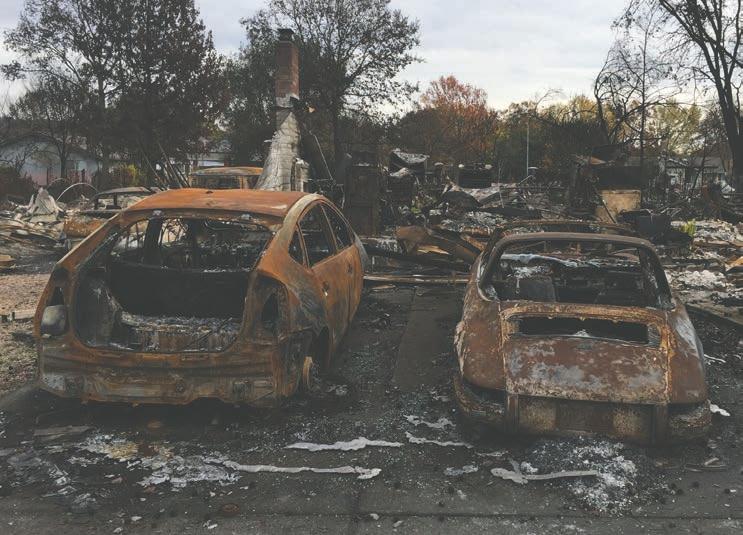
COMMUNITY | JANUARY

Now through 1/6/18
Art: Xiaoze Xie: Nocturnes
Xiaoze Xie observes daily life, particularly night scenes, to create theatrically lit, stage-like spaces with an ambiguous atmosphere and mood in paintings and a new video. The subjects in Nocturnes expand on Xie’s long-standing interest in exploring social reality and history. Stylistically, the works resonate with his earlier efforts, evoking a melancholic, poetic, quality as he captures the subtle color variations found in the low light of evening hours. Xie deploys 35 millimeter and medium format film cameras, Hi8 home and mini-DV digital camcorders, 5D Mark II, and, often, an iPhone to constantly study and document everyday life in still and moving images. Minnesota Street Project, Anglim Gilbert Gallery, 1275 Minnesota Street. For more information: http://bit.ly/2AOgdT3
Now through 1/10/18
Art: Games Recognize Game Game Recognize Game reflects a deep inquiry into sports’ power and potential as a culture-building element for social change, curated by Dania Cabello. Free. SOMArts Cultural Center, 934 Brannan Street. For more information: http://bit. ly/2nK230r
Now through 1/27/18
Art: The Racism Series
The Racism Series consists of prints produced in 2017, reflective of recent political and human conditions, especially their effects on minority communities. Negative Space Gallery at Dependable Letterpress, 1192 Illinois Street. For more information: http://bit. ly/2A2sKSo
Art: Free Admission Day
Enjoy free admission to the Museum of Craft and Design on the first Tuesday of every month. For museum hours and more information: http://bit.ly/2hVUvBu
Music: Bum Wagler & The Tune Wranglers
Live music by Bum Wagler & The Tune Wranglers, who play original tunes in the Honky Tonk country vein. 7:30 to 9 p.m. Farleys, 1315 18th Street.
Sports: Free Ice Skating
Lessons in Union Square
Available for all ages, lessons will last 30 minutes; skaters will then have 30 minutes to free
skate and practice their skills. Free, including skate rental, to those who sign up in advance. Limited to 50 participants per session. To enroll and for more information: http://bit. ly/1pWQHBo
1/6 and 1/7
Art: Vintage Paper Fair California’s finest selection of antique postcards, advertising, pin-up art, local history, sports, entertainment, transportation memorabilia, and more. Complimentary appraisals on site. Free. 10 a.m. to 6 p.m. County Fair Building, Hall of Flowers, Ninth Avenue and Lincoln Way. For more information: http://bit.ly/2BPNvOL
Literature: T(w)een
Winter Read
Teens and tweens are encouraged to pick up a reading log. Every five hours of reading fills one log, which, when returned to the library, becomes a raffle entry. The more read, the more chances to win. 5:30 to 6 p.m. SFPL, Mission Bay, General Floor Area, 960 Fourth Street. For more information: http:// bit.ly/2iMKhEm or email jspringer@ sfpl.org
Literature: Page Turners of Potrero Umpqua Bank and Christopher’s Books are pairing up again for our series “Page Turners of Potrero” where local authors and artist come do readings/activities with neighborhood children. Free. 11 a.m. Events every second Saturday of the month. Umpqua Bank, 415 De Haro St. For more information: StephanieSanchez@UmpquaBank. com
Music: Daniel Berkman
Potrero Hill resident Daniel Berkman is a composer, multi-instrumentalist and innovator of the kora, a 21-stringed harp/lute from West Africa. 7:30 to 9 p.m. Farley’s, 1315 18th Street.
Politics: MLK 2018 March
Join thousands honoring the Selma to Montgomery, Alabama marches at the MLK2018 commemorative march/parade from San Francisco’s Caltrain Station to Yerba Buena Gardens.
The 1.5-mile journey crosses the Lefty O’Doul Bridge and stops at Willie Mays Plaza at AT&T Park to commemorate the crossing of the Edmund Pettus Bridge in Selma, a symbol of violence and victory
in the Civil Rights movement. At Yerba Buena Gardens, an interfaith commemoration will remember Dr. King. Participants in groups of ten or more are encouraged to register to ensure a designated location within the march/parade. 9:30 a.m. to noon. Free. For more information: http://bit.ly/2nMBYxy
Literature: The Spirituality of Awe
In The Spirituality of Awe the robotic revolution is here and there’s no going back. From the way we raise our children, work settings, governments, and even wars, the quick fix-instant result society is roiling our world. What’s lost in this delirium is depth, the awesomeness, not just of machines, but of our flesh, capacity to feel and dwell in the miracle of the unknown. Can we preserve awe — the arguable “heart” of humanity — in spite of and even in light of our technologies? Or will we devolve into mechanically driven puppets, numb to possibilities, blind to our servitude? Author Kirk Schneider, Ph.D., is a leading spokesperson for contemporary existential-humanistic psychology. 6 p.m. Book Passage, 1 Ferry Building. For more information: http://bit. ly/2iHN01M
Music: Soul Delights
Join us for a lively performance. 7:30 to 9 p.m. Farley’s, 1315 18th Street.
Music: EJ Matthews Band Voted “Breakout Artist of the Year” in 2017 by Living Blues magazine. 7:30 to 9 p.m. Farley’s, 1315 18th Street.
Comedy: Sketchfest
The 17th annual SF Sketchfest Comedy Festival takes over the California Academy of Sciences for a knee-slapping night of creatures, cocktails, and humor. 6 p.m. Members $12. NonMembers $15. California Academy of Sciences, Golden Gate Park, 55 Music Concourse Drive. For more information: http://bit.ly/2nModis
New Year: Mochi Pounding Ceremony
Celebrate the Japanese New Year with Kagami Kai, an acclaimed mochi group, as it presents the colorful and exciting New Year tradition of mochi pounding to make delectably sweet rice cakes, with music, dance and costumes. Fold paper cranes and take an omikuji – paper fortune – from the fortune tree for luck and prosperity in the new year. Free with general admission. 11 a.m. to 2 p.m., Asian Art Museum, Samsung Hall, 200 Larkin Street. For more information: http://bit.ly/2yV2msG
Food: The Great Mac ‘n Cheese Melt-Off
Fifteen of the best food trucks and pop-up shops will be mixing up mouthwatering mac and cheese specials all day long. Who’ll be the mac and cheesiest? Cast your vote for the chancellor of cheese, the monarch of mac, the king of queso in this tasty melt-off. 11 a.m. to 5 p.m. $5 to $32. SoMa StrEat Food Park, 428 11th Street. To purchase tickets and for more information: http://bit.ly/2BR0LD1
1/22 through 1/31
Food: SF Restaurant Week SF Restaurant Week celebrates San Francisco’s world-class dining community. Nearly 130 restaurants around the City offer special prixfixe menus to showcase their passion for sharing great food. Lunch (two+ courses): $15 and $25 menus. Dinner (three+ courses): $40 and $65 menus. For more information: http://bit.ly/1mZ1Q3F
Community: Tree Planting
Join Friends of the Urban Forest for a community planting and potluck event. 8 a.m. to 3 p.m. Neighborhood request deadline: January 24, 2018. RSVP and for more information: fuf.net/events.
Science: Radioactivity
What’s going on inside the nucleus of an atom?
Why does it spit out radiation?
Did you know that you’re exposed to radioactivity every day? Learn the facts about this somewhat controversial topic. Adults only (18+). 6 to 10 p.m. $17.95 advance; $19.95 at the door. Exploratorium, Pier 15. For more information on the evening’s full program and to purchase tickets: http://bit.ly/2z03x6Z
1/26 through 2/4
Film: Noir City
Enjoy classic noir creations from around the world at the Noir City Film Festival. Most of the works are from the 1940s and 1950s. Each night, see two of the best works from a specific country, such as France, Argentina, and the United States. Proceeds from the festival help fund the Film Noir Foundation’s restoration and preservation efforts year-round. An all-access pass or individual Noir City double-feature tickets are available. Castro Theater, 429 Castro Street. For ticket prices, and more information: http://bit. ly/2kLhc08
Dance: Lunar New Year
Celebrate the Lunar New Year at the San Francisco Public Library with a Chinese Lion Dance and martial arts performance. 5 to 5:30 p.m. SFPL, Potrero Branch, 1616 20th Street. For more information: http://bit.ly/2nN7Py8

 Moss
Moss

Happy New Year from the View!


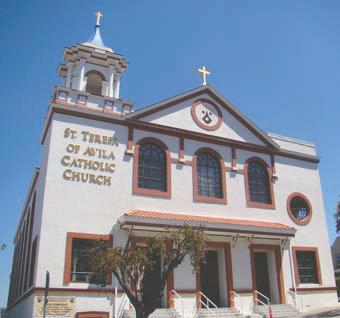

A Day in Dogpatch,Potrero Hill and ENVIRONS
BY BRETT YATES

Last year, I recounted in this column that, while walking home from an automobile repair shop, I discovered Martita’s Kitchen, a Mexican restaurant on Marin Street located amidst the mostly unwelcoming industrial area just beyond Potrero Hill’s south slope. Since then, I’ve learned that a number of eateries offer their fare along the lower Cesar Chavez Avenue corridor. They’re hidden among the distribution centers and storage facilities that make up the area between Interstate 280 and Highway 101. It’s not quite Bayview, not quite Potrero Hill, and, thanks to zoning laws, no one lives there.
Still, there’s a community of workers who need to eat. A popular place is the Deli Lama, 150 Toland Street, a weekdays-only breakfast and lunch counter with ample seating and extensive menu of sandwiches, burgers, and breakfast specials. I visited in the morning, ordered the hotlink scramble – chopped hotlink, mushrooms, spinach, cheddar and pepper jack cheese, two eggs – paid about eight bucks, and moments later dug into a plate of classic American breakfast food: an ample serving with buttered toast and fried potatoes, which’ll always be more satisfying than the fancified Eggs Benedict of brunch. The Deli Lama is cash-only. I forgot to visit an ATM before biking over, but the meal was sufficiently inexpensive I was able to pay for it from the loose bills and change I happened to have on me.

The restaurant opens at 6:30 a.m., closes at 2:30 p.m. Breakfast ends at 10:30 a.m. When I was there a pair of San Francisco Sheriff’s Department officers walked in at about 10:40 a.m., clearly regulars – they complimented the owner on the cuteness of his grandchildren, whom they must have encountered on a previous visit – yet slightly delayed in their routine by the business of law enforcement, still hoping to order from the breakfast menu. No dice. The owner seemed like a nice guy, but rules are rules, apparently.

within its 2071 Third Street storefront. The Boba Shop occupies the countertop’s left side, operating as an independent business, though owned by the same family. It has more limited hours, opening at 11 a.m. instead of 8 a.m.; orders are rung up separately. Its menu is larger than that of Boba Guys, and includes, in addition to classic milk tea, seven varieties of jasmine green tea, three types of yogurt green tea, and four kinds of lemonade.
When I’m in South-of-Market, I’m usually on a bicycle or in a car. The roads’ width and the traffic speeds make the neighborhood feel like Los Angeles; it isn’t meant for strolling. But I recently found myself on foot on King Street’s southside, between Third and Fourth, and noticed for the first time the extensive tribute to the Native American tribes that, for thousands of years, inhabited the villages of Chutchui and Sitlintac on Mission Bay’s shores. An informational signpost, which looks like a black-and-white checkered pole from the road, describes them “skimming over the shallow waters of Mission Bay in their lightweight boats that they made of tule reeds lashed together with willow withes. With pointed sticks, they pried mussels from rocks and dug up clams; with woven baskets, they scooped up herring and smelt; with throwing nets weighed by grooved stones, they snared ducks and shorebirds.”

Europeans first sighted these peoples in 1775. The Mission San Francisco de Asis was founded a year later; the Spanish forcibly converted the natives to Catholicism. An 1886 account, quoted within the public display on King Street, illuminates the process: “If any captured Indians show a repugnance to conversion, it is the practice to imprison them for a few days, and then allow them to breathe a little fresh air in a walk around the mission to observe the happy life of their converted countrymen, after which they are shut up, and continue to be incarcerated until they declare their readiness to renounce the religion of their forefathers.” Tuberculosis, measles, and typhoid fever quickly decimated tribal populations after conversion. When Native Americans sought to flee the mission, often in response to the deaths of their families, they were hunted down and recaptured.

In 2017 I moved to a new apartment. The consequent need for new furniture was the impetus for me to step inside Big Daddy’s Antiques, which, from its massive space at 1550 17th Street, has been supplying the Hill with eclectic homewares since 2010. I couldn’t afford anything there but have found myself wandering in a couple of times since to admire the vast and beautiful selection of tables, chairs, sofas and light fixtures. Some of the objects that I suppose technically are for sale – vintage soapbox car, rusted metal clock taller than I am – seem to belong more to the store’s curated environment than to any potential buyer.


The space includes a fenced backyard, where plants are sold, and a slightly hidden loft with additional furnishings and decor. There’s stuff that looks like it could have come out of your grandmother’s house, and gear that looks like it belongs in some hipster artist’s studio. It’s all cool.
Someday I’ll buy something.
Moving eastward, I feel dutybound – after previously praising the Boba Guys’ Potrero 1010 outlet – to mention that a Dogpatch stalwart, The Sandwich Shop, now hosts a second business
Another placard reproduces the mission’s baptismal records from 1777 to 1787, listing old names – Taulvo, Cajnute – and new ones; Juan Bernadino, Maria Gaudalupe. The surrounding sidewalk is studded with plaques bearing the 104 known words that remain of the language, Rammaytush, which was spoken in Mission Bay for at least 1,500 years. It can be worthwhile to take a walk in SoMa after all.
For dinner, I returned to Dogpatch. I’d been meaning for ages to attend the Tuesday night trivia at Yield, a wine bar at 2490 Third Street. Yield offers a light menu of pizzas and bar snacks, but there’s enough to form a meal, which is a good thing, since weekly trivia starts around dinnertime, at 7:30 p.m. The bar’s cozy interior fills to the brim with competitors, most of whom are regulars. My friend and I were invited to join a welcoming preexisting team of two. The questions –shouted above the din of the crowd, with admirable clarity and volume, over the course of nearly two hours, by a microphone-less bartender – ran the gamut from history to pop culture, science to literature. There was a name-that-tune section; at one point, we were asked to unscramble an anagram to name a CBS sitcom.
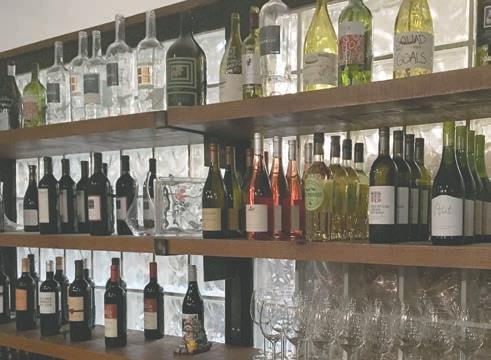

My main triumph was remembering the band behind the 1998 hit single “Kiss Me”: Sixpence None the Richer. My team was stumped a few times, but the questions didn’t seem that hard on the whole. I thought we had a decent shot at winning, but when the answer sheets were reviewed, we ended up coming in fifth, so I guess I was wrong. The top three teams received gift cards of varying value. Because it was the end of the month, the overall champion for the last four weeks was also crowned. They were gifted a big bottle of rosé. They were such gracious winners that they split it not only among themselves but amongst whoever else was still hanging out at Yield after trivia had ended, including me.














Margaret Keyes, Potrero Hill Resident, Passes
Last fall, several months after moving to St. Paul’s Towers in Oakland, Margaret Frings Keyes died, at the age of 88. Keyes, a Jungian psychotherapist and writer, participated in clinical and research work at the University of California Medical Center with Eric Berne, M.D., when he formulated his theory of Transactional Analysis, and trained as a Gestalt Analyst with Fritz Perls, M.D. Her books include The Inward Journey: Art Methods in Psychotherapy; Staying Married; Out of the Shadows: The Uses of Anxiety, Anger, and Depression ; Emotions and the Enneagram: Working Through Your Shadow Life Script; and The Enneagram Relationship Workbook The following article, written by Jacob Bourne, was first published in the View’s May, 2016 issue.
Wisconsin Street resident, Margaret Keyes, was born two months before the Great Depression engulfed the nation. Growing up in San Francisco’s Sunset District during those tough times, Keyes trained herself to become a keen observer of others starting at a young age. That salient skill spurred her into a long and fruitful career as a Jungian psychotherapist and writer. Inhabiting the home that she and her late husband, Vincent Keyes, purchased 45 years ago, Keyes reflected on her journey through the City’s changing character and what she’s learned from others along the way.
“It was a different world than this
one. Potrero Hill was an artist’s district and there were many political radicals; not communists but strong socialists. The labor movement was powerful. Back then it was an easier life for working people,” Keyes said. “We used to have eye contact here on the Hill and in the City. Everybody kind of knew everybody. Now there isn’t quite that, but I know there are other things, like Facebook, that people are using now.”
Keyes had an active youth, growing up with two younger brothers, Frank and Jim Frings, in a City that felt like their playground. “We would go up to Nob Hill and swim in the Fairmont Hotel’s pool,” she reminisced. “We had horseback riding lessons in Golden Gate Park.”
Academically inclined, Keyes received a number of scholarships that allowed her to attend private schools, eventually graduating from the University of California, Berkeley. From there, she earned a master’s degree from Catholic University and a doctorate from the University of Chicago in psychiatric social work.
Back in San Francisco, Keyes received a fellowship to practice social work at Catholic Social Services, eventually serving as the agency’s director. She then worked as a clinical social worker at University of California Medical Center – now UC San Francisco – and was an adjunct professor at the University of San Francisco.
“I was always a watcher and a
It’s 2018, a brand new chance to have your best year yet. And what better way to make a fresh start than with a toast of our fresh roast?
looker,” Keyes stated. “I’m particularly interested in groups, so it naturally led to my career choice.” Based on her many years facilitating group therapies in healthcare settings, Keyes believes that it’s in talking with one another that different ideas emerge about possible causes and treatments of diseases, as well as coping strategies for patients.
“Things just kind of click, as life itself is teaching us through shared experiences of living with illness,” she observed. “I think that one of the things that’s needed in medicine is more group process. Patients have a very inclusive frame of mind that doctors aren’t necessarily a part of. There’s a lot of knowledge that can come out of patients’ groups, as there is a collective perspective and experience.” Keyes believes that the therapist’s main role in such groups is to show participants how to listen and acknowledge their own strengths, helping them along in their journey.
For many years Keyes conducted an intensive type of individual therapy, which involved clients staying at her Muir Beach retreat center for weeks, spending time on the beach by themselves, writing, painting, and creating family narrative sculptures with clay. Men’s therapy groups were also held there, offering an outlet to talk in ways they couldn’t normally.
Keyes treasures the Potrero Hill home she shared with her husband, who worked as a real estate attorney. It was built in 1904, before the great fire of 1906, and contains parts of an old ship, such as a banister that had led up to the captain’s office. The home was once owned by an artist, who added mosaics into the woodwork. Keyes spends much of her time maintaining it and her Muir Beach property.
Keyes belonged to many writers’ groups over the years, energized by collaborations that created a collective feeling of being on the edge of something monumental. She’s authored
several books about therapy and the enneagram personality classification system, including a light-hearted allegorical one entitled The Enneagram Cats of Muir Beach. Though writing has been one of Keyes’ great loves, most of it was never intended for publication. “The art of writing is – in its essence – a maturing process for the writer,” she commented. “It just makes us much more conscious. It deepens all the forces that are around us and in our personal lives.”
Molly’s Daughter, A Three Generation Story Exploring: What do Women Really Want?, published by Arseya in 2008, is a fictionalized autobiographical work by Keyes that chronicles her story through the character Lizby. Keyes wrote the novel in a colloquial style. She believes that it’s through everyday conversations that the most important life questions are posed, the grappling with which creates a greater understanding of the reality of existence. Arseya had pushed her for a hasty completion, but it was during multiple rewrites that Keyes obtained deep insights into her own greater reality as she solved the issues inside herself. “There are billions and billions of individuals and none of us are alike. We all have this absolutely unique reality. It’s fascinating. It takes us away from self-flattery because it can be anywhere; the human genius,” Keyes remarked.
Though she no longer conducts therapy sessions, Keyes is still very much an observer. The passage of time has honed the skill and provided an abundance of perspective from which she now views the world. “I’m really aware of how many critical things are in play right now,” Keyes stated. “This game mentality that has taken over the election process, where it’s like team sports, I’m concerned about that. There are a lot of things that concern me, but
MARGARET KEYES continues on page 18

For 47 years, The Potrero View has offered news about important neighborhood goings-on, including what’s happening in our schools, with local merchants, families, parks, and cherished personalities. We’ve even occasionally broken larger stories, about the closure of the Hunters Point and Potrero power plants, new parking regulations, and land use changes. We’re still here, even while the San Francisco Bay Guardian and other publications aren’t, and the San Francisco Examiner is no longer a daily.

The View will only survive into the future with your help. Which is why we’re asking you to donate generously to the paper. Please take this opportunity to show your appreciation for community news by doing one or more of the following:
SUBSCRIBE! For $48 you’ll receive the paper every month in your mail box. How exciting!
DONATE $68, and receive a copy of The Daddy Handbook, by View publisher Steven J. Moss, a perfect gift for fathers and would-be dads!
DONATE $88, and receive a “life and death bundle,” The Daddy Handbook, a celebration of fatherhood, and Last Things: A Graphic Memoir of ALS, a gripping and deeply personal account of how Marissa Moss grappled with the death of her beloved husband.
DONATE $100, and receive all of the above plus our deep gratitude!
YES! I love the View, and would be delighted to help support it with my gift of:
$48 $68 $88
$100
Some other affordable amount $
Please send: my subscription The Daddy Handbook Last Things your love to:

Enclosed is my check. Please send, along with this form, to: The Potrero View, 1459 18th Street, Number 214, San Francisco, California 94107 I am sending my gift via PayPal to office@potreroview.net.
QUESTIONS? 415.643.9578 or editor@potreroview.net


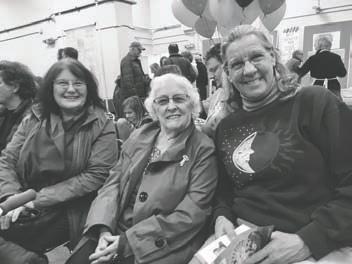
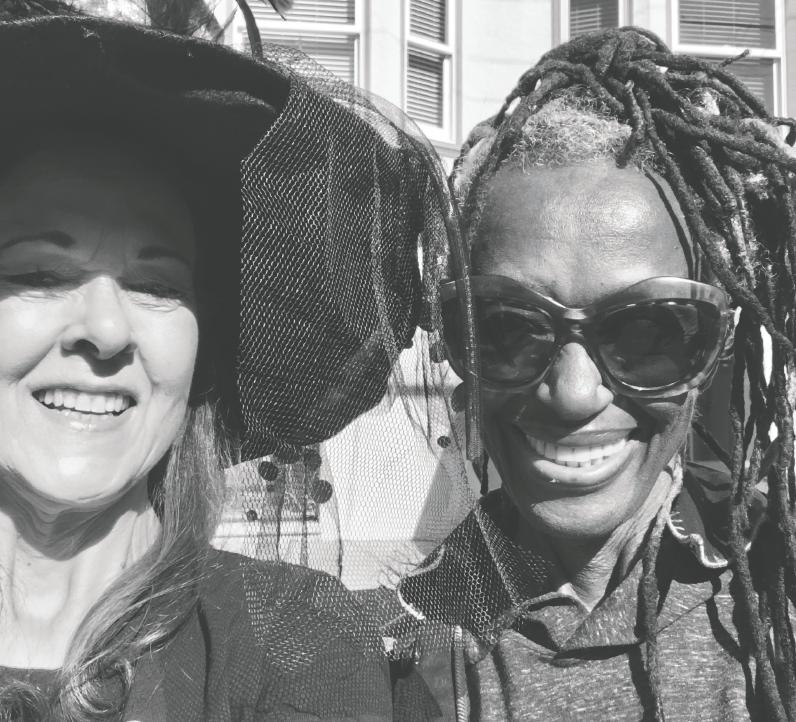
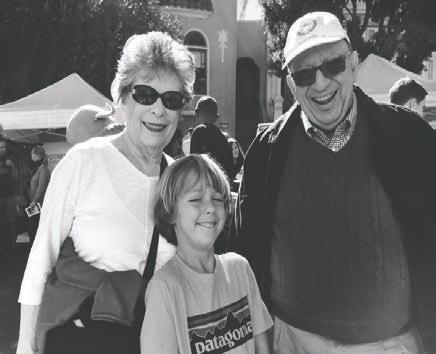
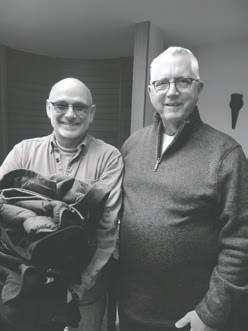
Supplies, Christopher’s Books, and online booksellers.
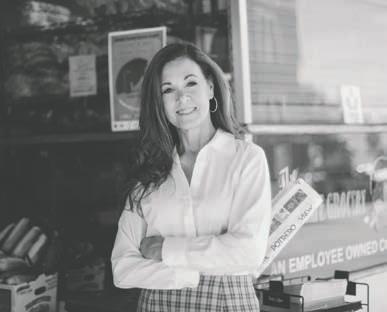

BUY NOTHING from page 3
consciousness, where we see ourselves not as individuals but as connected selves where we understand that together we have our things, our talents, even our ideas to give to our community,” Clark wrote. “Each week we all can contribute in ways that make a difference to everyone else, and therefore ourselves, because gifts create bonds between people, and when the whole community witnesses the gift-giving in their Buy Nothing groups the community is strengthened. I believe, no matter what your socioeconomic situation, the bounty is there, hiding in plain sight.”
The Potrero Hill-Dogpatch Buy

Nothing group was started by Kansas Street resident, Kat Snider, last summer. A recent transplant from Seattle, where Snider had been part of an active Buy Nothing group, she’d hoped to immediately find a similar sharing community in her newfound community in Potrero Hill. “I was part of an incredibly active group in Seattle,” said Snider. “Buy Nothing started in the Seattle area. The group I was part of was so active that it split off into even smaller neighborhood groups. When I moved here I was surprised that there wasn’t a group in this neighborhood, so I contacted Buy Nothing administrators about starting one. It’s been a process to grow it, and we’re still trying

Nominations and applications for the Green Benefit District Board of Directors open on January 24, 2017.
Information about the GBD, including activities and projects, district boundaries and election schedule and other information is on the GBD website at GreenBenefit.org
The board has 15 elected directors, a mix of residents, business owners and green space advocates. The 5 seats up for election in early 2018 are:
Property owners in Dogpatch (commercial or residential) - 3 seats
Property owner in NW Potrero Hill (commercial or residential) - 1 seat
Tenant in NW Potrero Hill (commercial or residential) - 1 seat
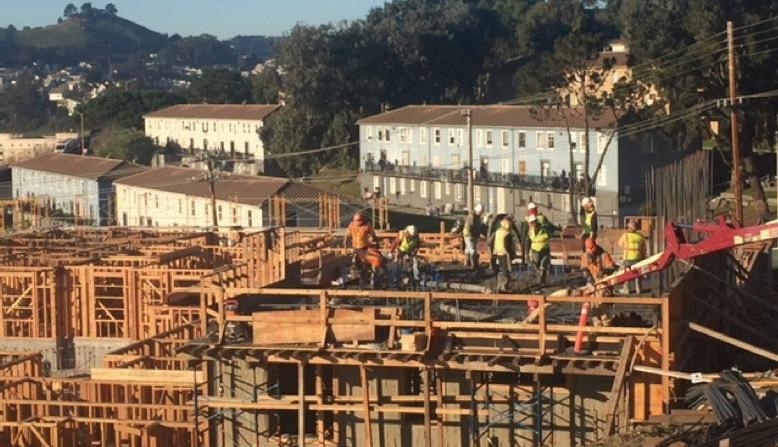

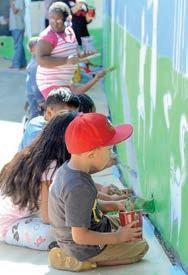
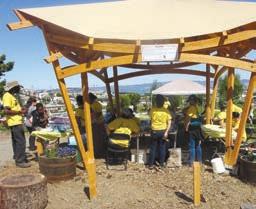
to get it off the ground.”
It’s one of seven Buy Nothing groups in the City, including one serving the Mission and another South-of-Market, and has more than 40 members. A Facebook account is needed to join; the social media platform is the medium by which members engage with each other. Participation is limited to adults; prospective members have to live in the group’s specific neighborhood area,
approved by the group’s administrator to join. The Potrero Hill-Dogpatch Buy Nothing group’s geography is bounded by 16th Street south to Cesar Chavez Street and Highway 101 east to the Bay. Members can post about things to gift or lend, or request something. No bartering or exchanges of money are permitted. Provision of intangible
BUY NOTHING continues next page

gifts, such as time and talents, are especially encouraged. The giver doesn’t have to contribute to the first person who responds.
“It’s more of a focus on the community aspect, which differentiates it from other groups, like Craigslist or Nextdoor,” explained Snider. “The group’s area is supposed to be very walkable and create ways for neighbors to interact with each other. In the Seattle group that I was a part of people got really creative. Someone once made pies using local blackberries and then


offered them to members. Typically, people use the group for spring cleaning. What makes it special is when someone donates their time and gives gifts.”
Samantha Luks, Rhode Island Street resident, used to be part of Freecycle, a nonprofit organization that promotes the complimentary exchange of goods between community members to keep items out of landfills. However, she received constant emails from the group, which became overwhelming. She joined Buy Nothing because she thinks that using Facebook offers a better format, and is drawn to Buy Nothing’s hyper-local aspect; she’ll
only be connecting with people nearby.
“I joined recently, and I really hope people use it,” Luks commented. “I’ve been really turned off from buying new things. I’m burned out on shopping; it’s the amount of money you can spend on something new that’s produced in a way that’s unfriendly to workers. So why not try to find something that someone is giving away? We have a hard time getting rid of things, so this helps us do that.”
Snider aims to continue helping the Potrero Hill-Dogpatch group grow, and can draw upon assistance and advice from an administrator who
serves all Northern California groups. She thinks that the Buy Nothing model has a high degree of potential for the neighborhood because of the number of new people moving in who seek a sense of belonging.
“The more activity there is, the more people will want to be involved in it,” she said. “The most moving thing is the gift of time and talent. I work in digital marketing and have some spare time, so there are a lot of things I could do to use my skills to help out the community. The gift doesn’t necessarily have to be a thing.”
Kids’ Photos


Calling All Shutterbugs!
Kids 13 years and younger can submit a photo once a month, before the 20th, with the winning image receiving $35.
Please send submissions to editor@potreroview.net.




CLASSIFIED ADS
Wanted: Software Engineer
Mavrx of SF seeks a FT Software Engineer to work closely w/our team to understand operational needs, come up w/solutions, & prototype, iterate & launch frequently, build software & systems prototypes as you architect, test, & re ne internal systems, tackle a wide variety of technical problems throughout the stack& across multiple projects, develop APIs, both to power continuing product development & to interact w/3rd parties, & continually analyze & optimize code for efficiency & performance. BS in CompSci/IT req, plus 24 mos exp inc 12 mos developing 3rd party software systems. Fax resumes to 866-849-7714.
Housekeeping
CLEANING PROFESSIONAL since 1986. Offices, apartments, homes, and buildings. Roger Miller 415-794-4411 References given with bid.
Muir Beach Vacation Studio
Walking distance to the beach, with the crashing waves visible and audible from the place. Includes kitchenette and lovely patio. $175/weekdays; $200/weekends; $250/holidays. Editor@potreroview.net; 415.643.9578.
Wanted: Graphic Designer
Keybase of SF seeks a FT Product Digital Graphic Designer to design, write, update and maintain the company’s software and user interfaces to maintain an aesthetic that appeals to clients, using layout principles and design concepts to conceptually design and layout the user interface. Bach in Graph or Dig Design plus 36 mo exp inc 12 mos exp with UX and front end design req. Combo of progressively responsible exp and educ equiv to a Bach acceptable. Fax resumes to 866-849-7714.
Muir Beach Vacation Home
Walking distance to the beach, with the crashing waves visible and audible from the place. Three bedrooms, two baths, with a lovely deck. Minimum two nights: $450/weekdays; $500/weekends; $550/holidays. Editor@potreroview.net; 415.643.9578.
Company Retreat Space
Gorgeous, rustic, Muir Beach space and stunning Mission Dolores home available for day rentals. Perfect for six to 10 people engaged in retreats of all kinds: writing, yoga, team-building, strategy sessions. $1,500 to $3,000 a day. Editor@ potreroview.net; 415.643.9578.
HOW TO PLACE A CLASSIFIED AD:
WANTED:
One Day a Week Advertising Salesperson
Get to know your community, and help sustain your neighborhood newspaper. Modest base pay, plus commission. Send note and résumé to: editor@potreroview.net
VEAVEA from page 6
run. “I’ve known Neo for 39 years. He’s very outgoing, very personable. He’s always done a lot of outreach for the community,” said Muao.
Veavea hopes to use his role as Supervisor to foster connections between different Southside areas. “Every neighborhood has some sort of community festival. It would be good to have a team of people go outside their neighborhood and work in festivals in other neighborhoods. If we can get four or five people from each neighborhood involved like this, they would get to know each other a lot better,” said Veavea.
Veavea believes he’d represent District 10 well because his experiences have taught him “how to really work together through thick and thin. No matter what issues you have with another District, you have to listen to them. You have to be very neutral on everything and listen to all sides of the issues.”
Veavea added that he believes a District Supervisor doesn’t have the ultimate decision on policy. “The decision lies within your community,” he said.
January Outreach
MARGARET KEYES from page 14
I don’t want to judge it in terms of my own personal experience. We’re in an experimental phase that’s crackling with lots of different possibilities and I can be nervous but I’m not condemning and I’m not judging. It’s worth talking about. The more we push at it, the better the questions get.”
To Keyes, how to prompt people to consider the common good in their actions is a puzzle that involves everyone, as even the most basic interactions between two people influence the collective. She’s bothered by superficiality, though acknowledges that it’s always been a force in society. “We’re not always fully conscious all the time,” she admitted.
If circumstances had been different Keyes would’ve liked to have been a parent, and wishes there were more time to write. She feels that her life has been a valuable one largely by virtue of her affirming the skill of others.
Though there are many complex ways of identifying rules by which individuals’ and groups’ best behave, Keyes cites one simple one. “The only thing I really trust is to treat others as I would be treated. I think it is very important to appreciate.”
A Community Dialogue on Strategies for Addressing Housing and Community Development Needs
The Citizens’ Committee on Community Development cordially invites you to an evening of food and conversation on
Tuesday, January 23, 2018 from 5:00 p.m. to 7:00 p.m. at George Washington High School (600 32nd Avenue, San Francisco, CA 94121). We hope you can join us for a discussion of housing and community development needs and to share resources! For more information, please visit http://sfmohcd.org/community-development or contact Mike King at (415) 701-4228 or michael.king@sfgov.org.
Count on WIC for Healthy Families
WIC is a federally funded nutrition program for Women, Infants, and Children. You may qualify if you are pregnant, breastfeeding, or just had a baby; or have a child under age 5; and have a low to medium income; and live in California. Newly pregnant women, migrant workers, and working families are encouraged to apply.
WIC provides Nutrition Education and Health information, breastfeeding support, checks for healthy foods (like fruits and vegetables), and referrals to medical providers and community services.
You may qualify for WIC if you receive Medi-Cal, CalFresh (Food Stamps), or CalWORKS (TANF) benefits. A family of four can earn up to $3,747 before tax per month and qualify.
Enroll early! Call today to see if you qualify and to make an appointment. Call City and County of San Francisco WIC Program at 415-575-5788.
This institution is an equal opportunity provider
The Assessment Appeals Board resolves legal and value assessment issues between the Assessor’s office and property owners. We have two vacancies on Board 1, which oversees all downtown properties – high rise residential, office, commercial, hotels. Board 1 also oversees all properties over $50 million in assessed value throughout the City. Assessment appeal hearings are quasi-judicial, conducted in a manner similar to a court setting, with evidence and testimony presented by the parties. The Board then evaluates the evidence and testimony, and renders its decision. To be eligible for seat appointment, you must have a minimum of five years professional experience in California as either a: (1) public accountant; (2) real estate broker; (3) attorney; or (4) property appraiser accredited by a nationally recognized organization, or certified by either the Office of Real Estate Appraiser or the State Board of Equalization.
For more information regarding the Assessment Appeals Board call (415) 554-6778.
The City and County of San Francisco encourage public outreach. Articles are translated into several languages to provide better public access. The newspaper makes every effort to translate the articles of general interest correctly. No liability is assumed by the City and County of San Francisco or the newspapers for errors and omissions.



























